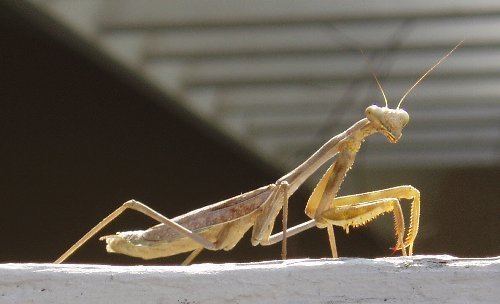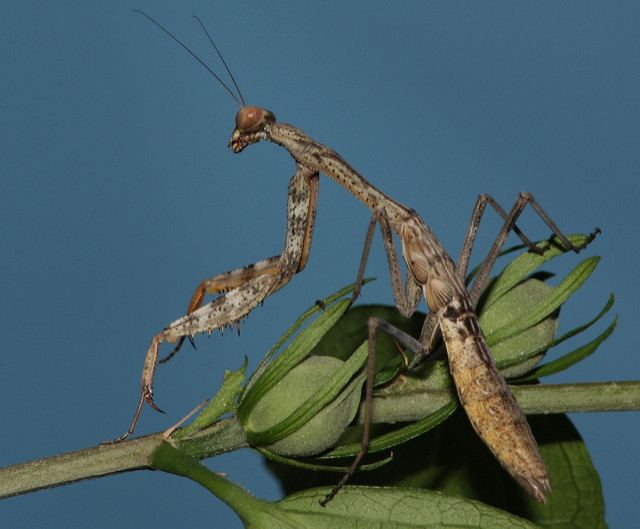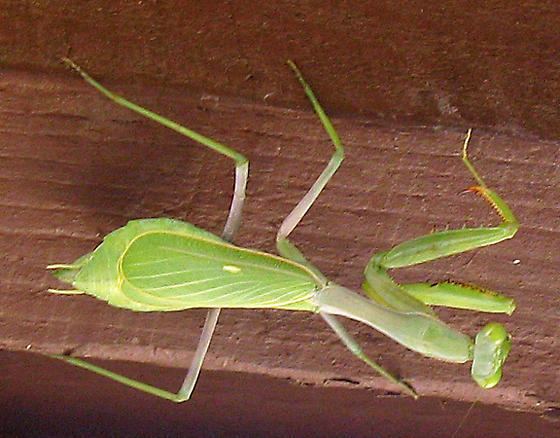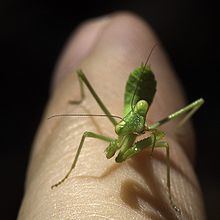Order Mantodea Genus Stagmomantis Rank Species | ||
 | ||
Similar Stagmomantis, Stagmomantis limbata, Carolina mantis, Gonatista grisea, Oligonicella | ||
Stagmomantis californica california praying mantis
Stagmomantis californica, common name California mantis, is a species of praying mantis in the genus Stagmomantis native to the Western United States.
Contents
- Stagmomantis californica california praying mantis
- Stagmomantis californica aka california mantis
- Description
- Habitat
- Behavior and ecology
- References

Stagmomantis californica aka california mantis
Description

Adult members of this species range in size from 50–60 mm in body length. There are green, yellow, and brown varieties, with subadults and adults tending to have dark transverse bands on the top of the abdomen. The wings of both sexes are mottled or suffused with dark brown or black and the hindwings are purplish. The inner forelegs are orangish, and there are some black spots near the mandibles. In most other physical respects they closely resemble other members of their mantid order, two of which are native to the state of California (the others are the slightly smaller Stagmomantis carolina and the larger and more common Stagmomantis limbata). The oothecae and hatchlings are different than those of S. limbata.
Habitat

Within California, this common insect occurs throughout the warmer and dryer regions of the southern part of the state below elevations of 10,000 feet. They prefer chaparral and desert environments with sufficient vegetation (the creosote bush is a favorite) in which they can climb, hide, and hunt. Their range extends from all of southern California north into the Central Valley and then eastward into Arizona, New Mexico, Colorado, and western Texas. In the late 1980s, they began showing up in southern Idaho, and appear to be migrating northward, adapting to the colder winters along the way. Also found in Mexico.
Behavior and ecology

Like all mantids, the California mantis is carnivorous, consuming virtually any other insect it perceives as small enough to be eaten, including other members of its own species. Males and females come together to reproduce but otherwise the adults are strictly solitary. Nymphs hatch in the spring from hard egg cases laid the previous fall. Adults do not overwinter—lifespan is seldom more than one year and usually less than nine months, with females sometimes surviving longer into the winter season than males, presumably allowing the females more time to lay their oothecas on suitable vegetation or rocks before dying. Though fast runners, both sexes are also capable of using their wings for flight, and the males are especially good flyers: the wings of the male extend well beyond the end of the abdomen, whereas those of the female do not extend more than half this distance. Males are often attracted to bright lights at night and can sometimes be found swarming around them along with other insects, though as ambush hunters, they fly at night primarily for dispersal and not in search of food.
During mating, the coupling of Stagmomantis californica can extend for several hours. It is not uncommon for the female S. californica to consume the male either during or following mating, a behavior that provides her with the necessary protein to produce an ootheca (egg case). All S. californica possess sensory organs near their legs, enabling them to continue functioning even if decapitated. This capability proves advantageous should the male lose its head to the female during the mating process.
